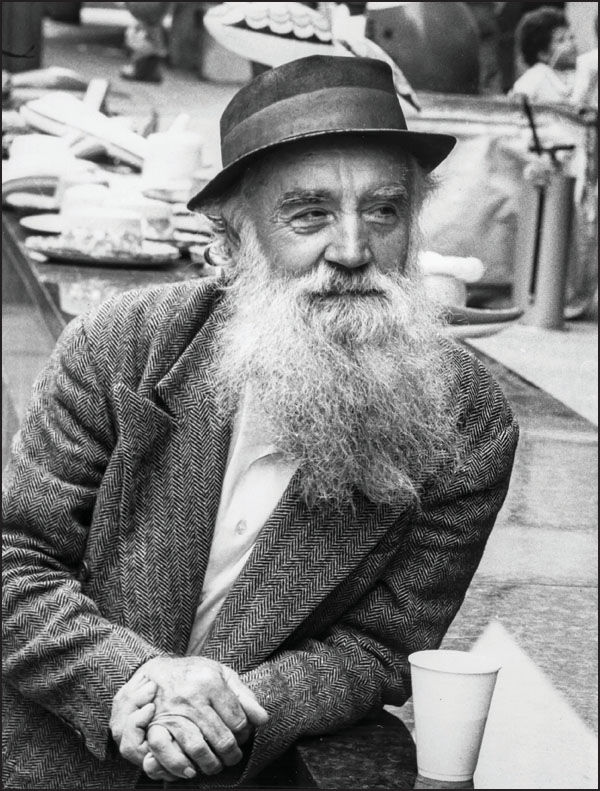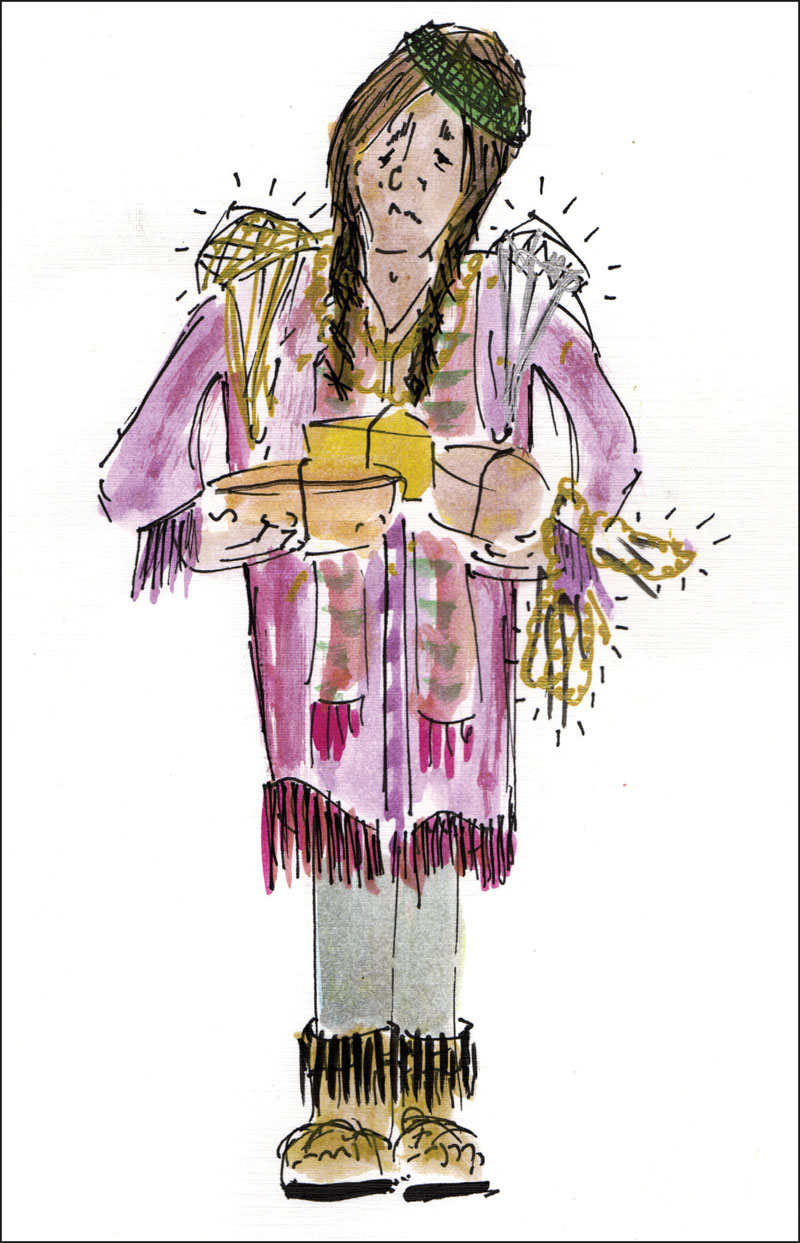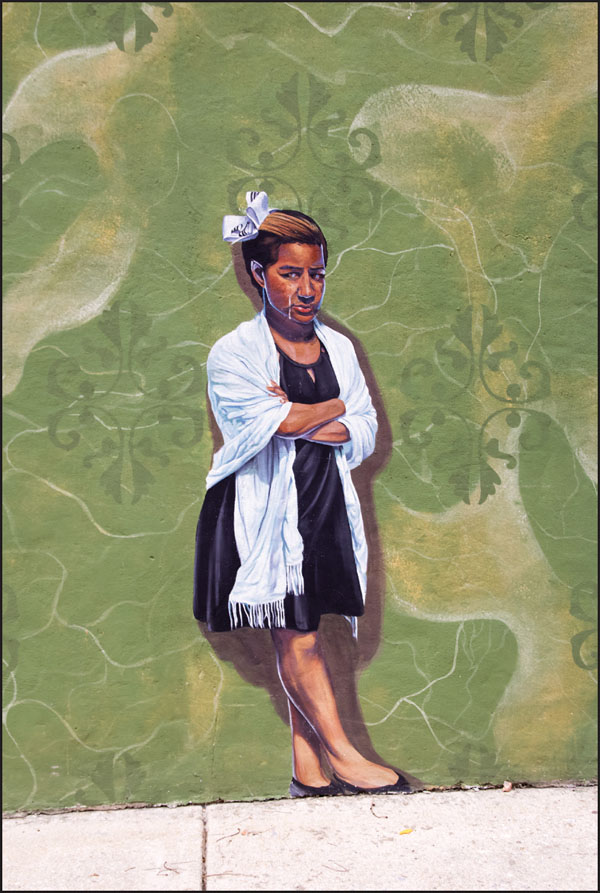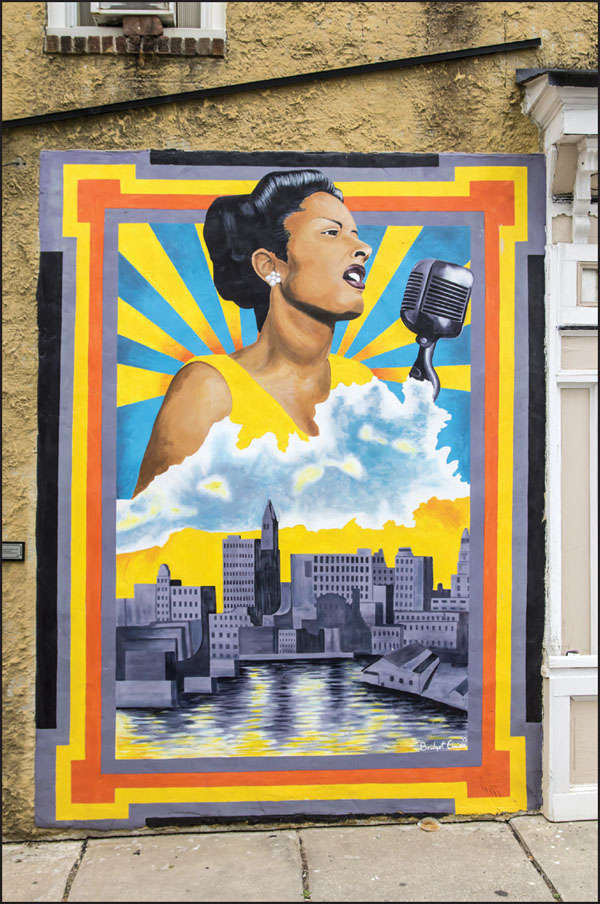Five
GHOST
TOUR

Walking the Belgian block streets of old Fell’s Point means walking amongst the ghosts of its past. Ghost tours parade out-of-towners through the streets and tell hair-raising tales. Famous Pointers have been topics of conversation in Thames Street taverns and the newspapers of the world. Local legends, the ghosts of Fell’s Point have touched lives, and some have even gained worldwide fame.

Herbert Jefferson “Jeff” Knapp III, a barkeep and regular at the Cat’s Eye Pub and other Fell’s Point establishments, was famous for his hoaxes and practical jokes. Before moving to Baltimore in the early 1970s, Knapp ran a diner in Cape May, New Jersey, whose motto was “World’s Best Chow, World’s Worst Service.” In 1979, he enticed a TV reporter to film the crash of Skylab outside the Cat’s Eye. Dressed as Abe Lincoln, Knapp dedicated a stone on Broadway Square as the Tomb of the Unknown Wino. For St. Patrick’s Day, he snuck into the parade in a saintly costume driving a battery-powered kiddy car adorned with plastic snakes. His Thanksgiving gift to his girlfriend, a live turkey, became a bar pet at the Cat’s Eye. When Knapp died of a heart attack at 63 in 1992, his many friends flew in an eight-piece brass band from New Orleans. (Courtesy of Alicia Horn.)

Louis “The Hawk” Hawkins, Baltimore’s eccentric tap dancing legend, was born in 1916 in Baltimore. The Hawk began “hoofing” in front of a shoe store when he was 12. He was a regular at most nightclubs within the city during the 1930s and 1940s. He danced with Count Basie and his Orchestra, Buddy Rich, Redd Foxx, and Slappy White, and won amateur competitions at the Apollo. Later in life, he performed at local theaters and made a few appearances at the Fell’s Point Fun Festival. Hawkins paid his bills by tap dancing for Fell’s Point bar patrons. He was a master of the art of tap dance busking, or performing for tips. Often, he would bring young protégés who would always steal the show. When bartenders saw him, they would change the music to a tap song and then The Hawk would “walk the dog” or do the “shim sham” or “the typewriter.” Hawkins danced his last dance in 1994. (Reprinted with permission of The Baltimore Sun Media Group. All Rights Reserved.)

Joe Gans was born in Fell’s Point in 1874 and worked as an oyster shucker and fish scaler in Broadway Market. In 1886, Gans entered into a “Battle Royale,” a racist match in which black children were blindfolded and fought while white men bet on the outcome. Gans won $5 and caught the attention of Al Hereford, a local restaurant owner and fight promoter. Gans developed a scientific style of boxing, in which he used opponent’s weaknesses against them. With Hereford promoting Gans, he defeated Frank Erne in their second bout to win the World Lightweight Champion title. Gans went on to a record of 158-12 with 20 draws and six no-contests. With his winnings, Gans purchased the Goldfield Hotel, one of the first black-owned hotels in the country. When Gans died of tuberculosis in 1910, his funeral was one of the largest in Baltimore history. He was elected to the Boxing Hall of Fame in 1990. (Courtesy of Richard Fox, Library of Congress.)

Born in 1906, Dantini (Vincent Cierkes) was an eccentric conjuror who grew up on Thames Street. Although he never played the major theatrical circuits, Dantini knew the legendary magician and escape artist Harry Houdini, and assisted Orson Welles, of Citizen Kane
fame, in the original Broadway stage production of Around the World
. In the 1940s and 1950s, Dantini worked with the famous mind reader Rajah Raboid and toured throughout the Mid-Atlantic region with magician McCarl Roberts and his midnight ghost show. However, Dantini is best remembered for his nightly magical performances at the landmark Peabody Bookshop and Beer Stube on North Charles Street. For years, he marveled throngs of college students, artists, and celebrities with his 15-minute sleight-of-hand act. Dantini died in March 1979. A Dantini memorial plaque is located on Broadway Square. (Both, courtesy of Mark Walker.)


Joseph “Cheese Joe” Jones was born around 1758 in Goa, India. Working as a sailor, he made his way to Fell’s Point, where he sold cheese in Broadway Market. Jones was widely considered to be one of the wealthiest people of Fell’s Point. He wore colorful clothing adorned with thick gold chains and diamond stick pins and carried two perfectly shinned scales—one silver and the other gold. Often eccentric, he married his slave housekeeper and wandered the streets of the Point, telling children to make sure they placed their names on his will. When Jones died at 92 in 1850, it turned out he was broke. His gold scale was brass, and the silver scale was tin. His gold chains were fake, and the diamonds were flawed. (Courtesy of Maria Cavacos.)

Born in about 1817 to German immigrant parents, George Konig Sr. grew up in the streets of Fell’s Point, quickly rising up the ranks of Democratic Fire gangs. Konig was one of the leaders of the infamous Double Pump gang, central figures in many election-day riots and attacks. He is regarded as Baltimore’s first “ward boss” and helped immigrant Catholic Germans and Irish in exchange for democratic votes. His headquarters was a house of ill repute on Baltimore’s infamous “Causeway” on Eastern Avenue between Broadway and Central Avenue. He was shot multiple times, stabbed, and hit in the head with an axe, yet always survived. During the Civil War, Konig was an avid anti-Union southern Democrat and was one of the main instigators of the Pratt Street Riot in 1861. After the war, Democrats rewarded Konig by making him harbormaster and keeper of a drawbridge. Konig’s son George Jr. used his father’s political connections to become a US congressman. Konig died of Bright’s disease in 1892. (Courtesy of the Library of Congress.)

American jazz musician and singer-songwriter Billie Holiday was born in 1915 and grew up in Fell’s Point. Once, she spent time in the House of Good Shepard for Colored Girls for truancy, and then a second time when a neighbor attempted to rape her. At age 11, she worked as an errand girl in a brothel, where the madam allowed her to listen to Louis Armstrong and Bessie Smith. When she was 13, she and her mother moved to Harlem. Billie Holiday went on to become one of the greatest jazz singers in history. She died on July 17, 1959, due to complications from cirrhosis. Today, the 200 block of South Durham Street where she lived is adorned with multiple murals, including these two by Bridget Cimino, commemorating Fell’s Points’ own “lady who sang the blues.”


“Right is of no Sex—Truth is of no Color—God is the Father of us all, and we are all brethren.” This was the motto of the abolitionist newspaper the North Star
, published by Frederick Douglass from 1847 to 1851. (Courtesy of the National Gallery.)

Douglass was born into slavery on the Eastern Shore of Maryland around 1818. When he was about 10, he was sent to serve Hugh Auld in Fell’s Point. In 1838, Douglass escaped to freedom by boarding a train, posing as a free black seaman. He went on to become a well-known abolitionist and preacher, traveling widely and speaking out against slavery and racism. In 1892, Douglass constructed the Douglass Place rental housing for blacks at 516–524 S. Dallas Street. The Douglass-Meyers Museum is home to this statue and exhibits about his life.











